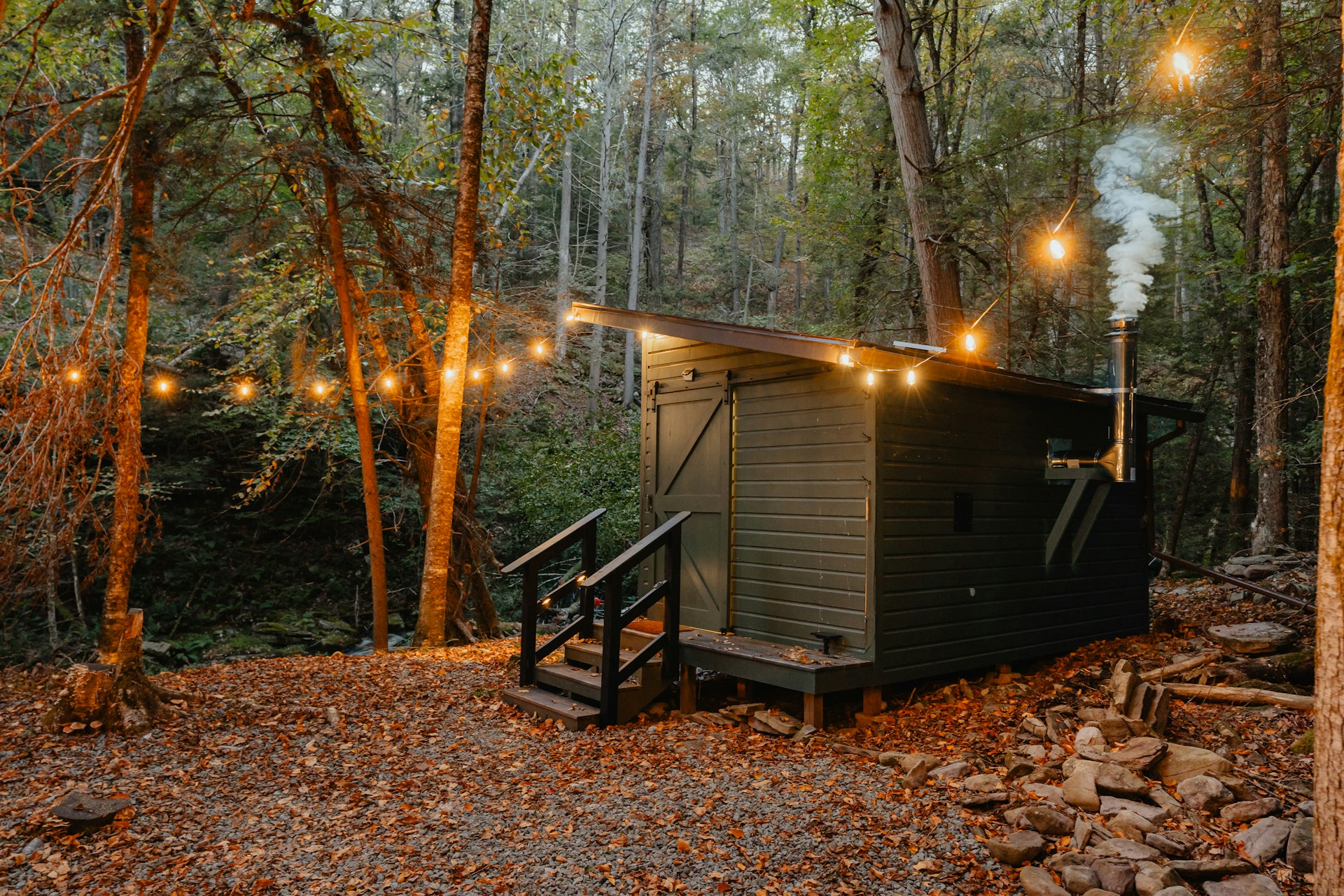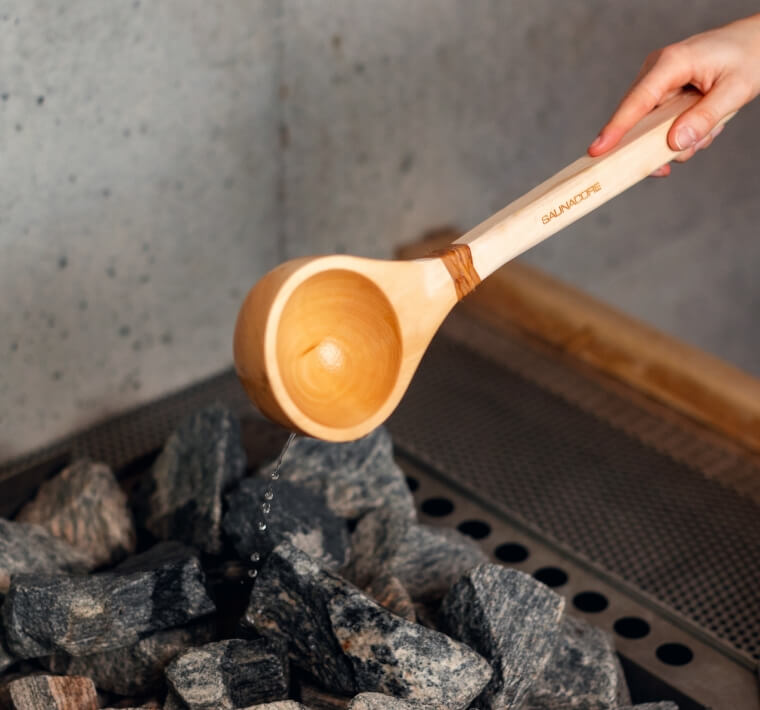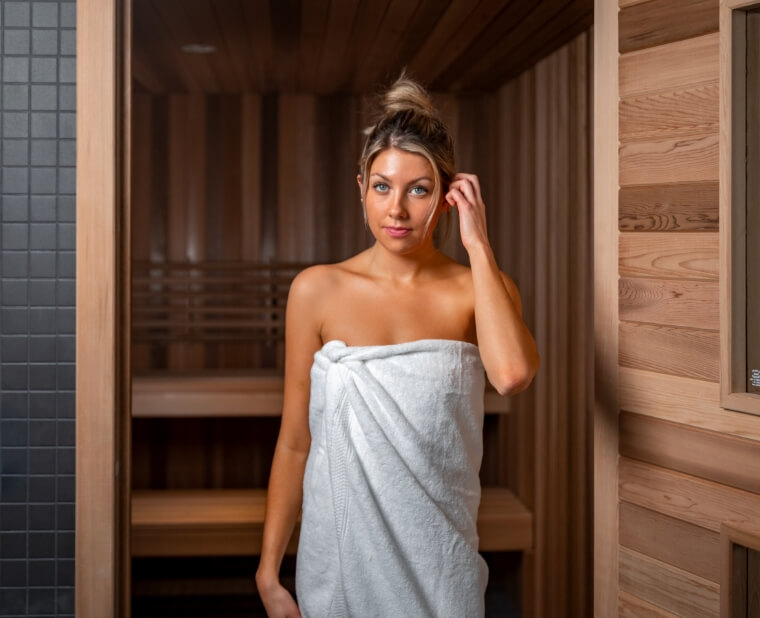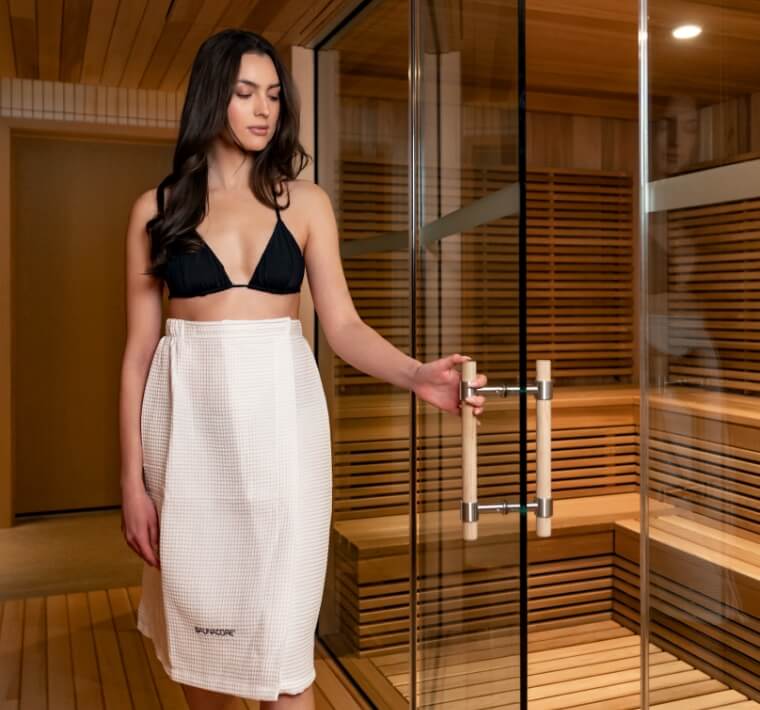Summary
A standard outdoor traditional sauna requires between 16-100 square feet of floor space, plus additional clearance for safety and access. The exact space needed depends primarily on how many people will use it simultaneously and your choice of heating method. With proper planning, most residential properties can accommodate at least a small to medium-sized sauna.
Planning an outdoor sauna but unsure how much space you’ll need? This common concern stops many homeowners from taking the plunge into sauna ownership. Understanding space requirements is the first step toward enjoying the numerous health benefits that come with regular sauna sessions.
In this article, we’ll break down exactly how much space different sauna sizes require, what factors affect your space needs, and practical tips for backyard planning. Whether you have a compact yard or sprawling garden, we’ll help you determine if a traditional outdoor sauna will fit your available space—and which size is right for your needs.
How Much Space Do You Need to Install an Outdoor Sauna
A compact outdoor traditional sauna typically requires a minimum footprint of 4×4 feet, suitable for 1-2 persons. Larger models accommodating 4-6 people may need up to 8×8 feet or more. Ensure additional space for ventilation, access, and safety clearances around the sauna.
That’s the short answer.
General Sauna Size Dimensions
Traditional outdoor saunas come in several standard sizes to fit different needs. Here’s what you can expect:
The cozy 1-2 person sauna is perfect for individuals or couples with limited space. These compact models offer an intimate sauna experience without requiring a large footprint in your yard.
Mid-sized 3-4 person saunas provide a good balance between space efficiency and social enjoyment. They’re ideal for small families or occasional entertaining.
For larger families or those who love to host, 5- 6+ person saunas offer plenty of room for everyone to enjoy the benefits together.
| Sauna Capacity | Dimensions (W x D x H) | Recommended Clearance | Total Space Needed |
|---|---|---|---|
| 1-2 Person | 4′ x 4′ x 7′ | 12-18″ all sides | 6′ x 6′ area |
| 3-4 Person | 6′ x 6′ x 7′ | 12-18″ all sides | 8′ x 8′ area |
| 5-6 Person | 8′ x 8′ x 7′ | 12-18″ all sides | 10′ x 10′ area |
| 6-8 Person | 8′ x 10′ x 7′ | 12-18″ all sides | 10′ x 12′ area |
Remember that barrel saunas may have different dimensions due to their unique shape. Custom-built options are also available if you have specific size requirements or an unusual space to work with.
Key Factors Affecting Your Sauna Space Requirements
Beyond the basic dimensions, several important factors will influence how much space you’ll actually need for your outdoor sauna. Each of these considerations plays a crucial role in determining the right size for your needs and available space.
Number of Regular Users
The number of people who will use your sauna regularly is perhaps the most crucial factor in determining size.
A solo sauna enthusiast or couple can enjoy a compact 4×4 foot model without feeling cramped. For comfortable seating, plan on about 2 feet of bench space per person at minimum.
If you’ll host sauna sessions with friends or have a larger family, you’ll need to scale up accordingly. Remember that a too-small sauna can feel uncomfortable and may discourage regular use.
Consider not just your immediate needs but potential future use as well. Many sauna owners find their sauna becomes more popular with family and friends over time.
Intended Usage Patterns
How you plan to use your sauna directly impacts the space requirements for a satisfying experience.
For basic relaxation and heat therapy, standard dimensions work well. However, if you practice sauna yoga or stretching exercises, you’ll benefit from additional interior room.
Family sauna time might require more space than solo therapeutic sessions. And if entertaining is part of your sauna vision, err on the side of more space.
The frequency of use also matters – a daily-use sauna justifies more investment in adequate sizing than one used occasionally.
Available Outdoor Space
Your existing yard or garden space creates natural constraints for sauna sizing decisions.
Take accurate measurements of potential installation areas, including length, width, and any height restrictions. Don’t forget to account for required clearances on all sides.
Consider the visual impact – a sauna that dominates your entire outdoor area may feel overwhelming. Aim for balanced proportions with your overall landscape.
Remember that the sauna doesn’t need to be centered in your yard – corner placements often work well and can maximize remaining usable space.
Heating System Requirements
Your choice of heating method significantly affects the total space needed beyond the sauna itself.
Wood-burning saunas create that authentic traditional experience but require more clearance for safety – particularly around the chimney. You’ll also need convenient space to store firewood nearby.
Electric saunas have simpler space requirements but need access to appropriate electrical service. Position these within a reasonable distance of your electrical panel to avoid excessive wiring costs.
Some modern infrared saunas have the smallest footprint requirements but may lack the traditional sauna experience many enthusiasts prefer.
Safety Clearance Needs
Proper clearance around your sauna isn’t optional – it’s essential for safety and longevity.
Allow minimum clearance of 12-18 inches on all sides of the structure for proper airflow and fire safety. This space prevents moisture buildup and reduces fire hazards.
If placing near existing structures, respect all building codes regarding minimum distances between structures. These vary by location but typically require 3-5 feet between buildings.
Remember that clearance space isn’t wasted space – it improves airflow, allows for maintenance access, and creates a buffer zone for comfort and safety.
Accessibility Considerations
How easily you can access your sauna affects both usage frequency and long-term enjoyment.
Create clear, well-defined pathways between your home and the sauna, ideally at least 36 inches wide for comfortable walking. Consider lighting for evening use.
In snowy regions, plan for winter accessibility with cleared pathways and protection from drifting snow around the sauna structure.
For users with mobility considerations, additional space for steps, railings, or ramps may be necessary, potentially expanding the total footprint needed.

Saunacore: Your Partner in Outdoor Traditional Sauna Solutions
At Saunacore, we are dedicated to crafting premium-quality saunas and steam bath products that enhance wellness and relaxation. With over 40 years of experience in the industry, our commitment to excellence is evident in every product we manufacture.
Our diverse product line includes traditional indoor and outdoor saunas, far infrared sauna rooms, sauna heaters, steam bath generators, DIY liner sauna kits, and a wide range of accessories. Each product is meticulously designed and assembled in our Toronto, Canada facility, utilizing high-quality Canadian lumber and precision-engineered components to ensure durability and performance.
We pride ourselves on our attention to detail and the ability to customize solutions to meet our clients’ specific needs. Whether you’re looking to create a personal wellness retreat or a commercial spa experience, Saunacore offers the expertise and products to bring your vision to life.



